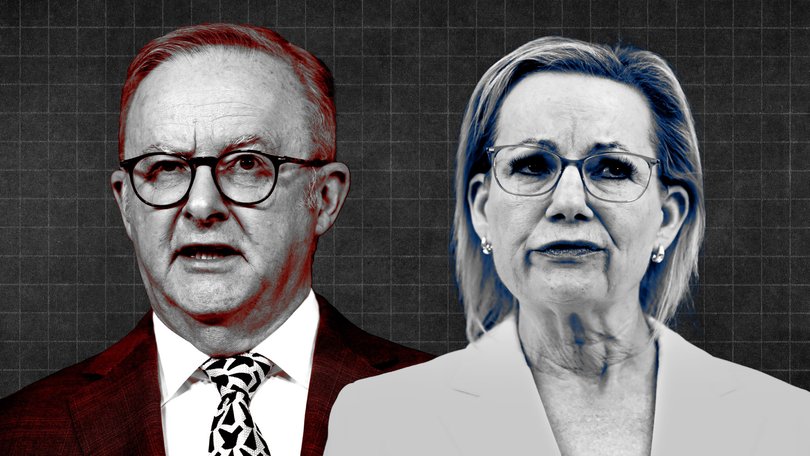EDITORIAL: Liberals zero in on vote-winning energy argument

For half a decade, the words “net zero” have been Australia’s climate shibboleth.
To commit to net zero by 2050 was to accept the reality of a warming planet and humanity’s responsibility to cut emissions to mitigate the damage.
To reject net zero by 2050 was to be an anti-science climate denier, the 21st century equivalent of a flat earther.
Sign up to The Nightly's newsletters.
Get the first look at the digital newspaper, curated daily stories and breaking headlines delivered to your inbox.
By continuing you agree to our Terms and Privacy Policy.Opposition Leader Sussan Ley’s task is to introduce some shades of grey into what has long been a black and white issue.
The Liberals want the best of both worlds. They say they accept the reality of climate change, but that a legislated net zero deadline is not the right mechanism to avert the worst of its effects.
Will voters buy it?
It will be a tough sell, particularly given the Liberals’ flip-flopping on the issue. Voters won’t forget that it was a Coalition government under Scott Morrison which made the initial net zero commitment (though it was Labor’s move to write it into law).
The Liberals need to show voters they have a credible energy plan
Ms Ley understands the best way to reach voters on the issue is to hit their hip-pocket nerve.
Voters want sensible action on climate change. They also want to be able to turn their air-conditioners on without fear they’ll have to get a second mortgage to pay the quarterly power bill.
So the Liberals are working to reframe the debate, from one of climate realists versus climate deniers to one of sky-high power bills versus energy affordability.
It’s an argument that has a chance of success with an electorate already suffering from a prolonged cost-of-living crisis.
Labor has been telling Australians ad nauseam that renewables are the cheapest form of electricity generation.
The problem is, that isn’t being reflected in their power bills. Even with generous rebates offered by State and Federal governments looking to buy favour with voters, household bills just keep getting more expensive.
While sunshine and wind might be free, the transmission infrastructure needed to get it where its needed comes at a significant cost.
Sensibly, Prime Minister Anthony Albanese has stopped predicting when and by how much power prices will go down, having learnt from his ill-advised forecast made in 2021 that annual bills would fall by $275 by the end of Labor’s first term. That didn’t eventuate.
As one energy economist told The Nightly, it will take at least 15 years for Australians to actually see the cheaper generation costs reflected in their electricity bills.
The Liberals are betting that they don’t want to wait that long.
Not that Ms Ley is making iron-clad commitments either, other than to say bills would be cheaper under a Coalition government.
The path to this point has been messy for the Liberals and an anti-net zero stance will make them unelectable to a certain class of voters. But the majority of Australians do want both emissions reduction and affordable energy.
Now all the Liberals need to do is show they have a credible plan to achieve it.
